Decking, also called decking - covering material terraces. It is made of wood or of materials based on it. Such a board has a high strength, moisture resistance and excellent decorative properties, which allows for a long time to maintain the original appearance of the terraces.
This material can also be used for arranging other open structures, who are constantly exposed to the environment:
- direct sunlight;
- precipitation - rain, city, snow;
- the emergence of the fungus, mold and other;
- strong temperature changes.
There are three types of decking - solid wood, and thermo wood-polymer composite.
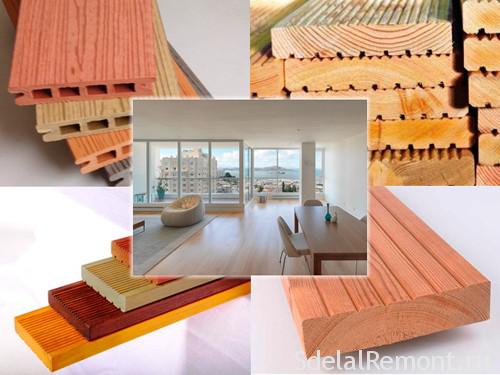
Three types of boards
natural wood. Initially, the board was made of wood terraces, saturated resins having high density and structure - it is a wood exotic species and larch. note, what, despite the financial crisis, material made of wood is still popular and is widely represented in the Russian market: for example, the company online store catalog Angara Plus you can find decking Larch. The Company's leading manufacturer of construction and finishing materials in the Siberian region with the modern technological equipment, that allows us to offer customers high quality material at affordable prices.
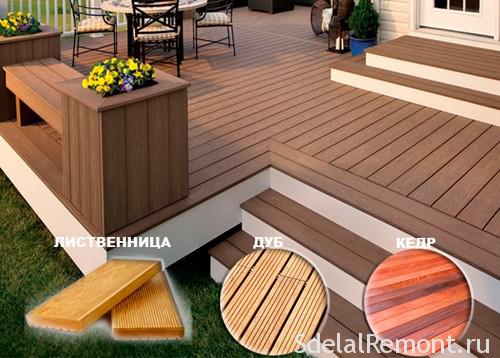
Termodrevesina. Decking, manufactured by using new processing technology timber at a temperature of +125 190S to +. Under the influence of hot air, its structure changes - it becomes stronger, reduced its water absorption, thus eliminating the problem of uneven shrinkage - anisotropy.
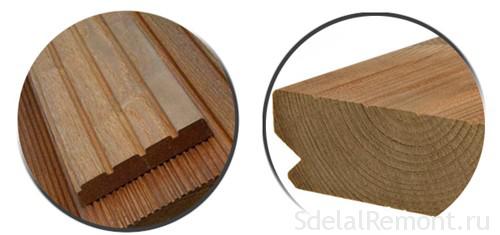
Wood-plastic wood. Currently, the most widely decking third kind - from wood-polymer composite. WPC made from cellulose fibers and polymer components.
A distinctive feature of the duodenum is almost zero anisotropy, as in this case, the cellulose - not the basis, and a filler for polymer, which is a basic element of the composite. The main producers of WPC decking board from under the trademarks POLYWOOD ™, POLYSHOLZ™, REHAU™, TWINSON™.
Decking composite - interesting example of symbiosis of two materials - wood and polymers. In conjunction with pulp, Plastic is protected from UV rays, which are harmful to him. In turn, polymer timber provides stability, giving the product a whole range of useful properties.
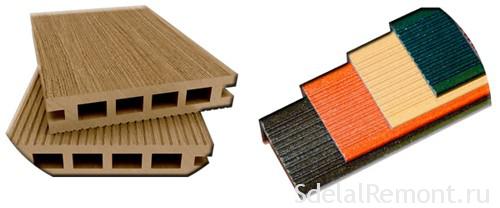
Decking of wood-polymer composite harmless, it is characterized by the absence of deformations, resistance to static loads (to 500 kilograms per square meter). For such a board easy to care for, it does not slide, easily processed and assembled, color stability throughout the life of the. In addition, it is easy to assemble and disassemble. Other types of terrace boards can not be compared with the WPC on such parameters, as the abrasion resistance, moisture and rot.
Among other advantages of this material is worth noting:
- environmental friendliness, health safety (used in the manufacturing process chemically neutral, harmless components);
- resistance to biological contamination (mildew or fungus);
- period - from 30 years old;
- excellent aesthetic properties, a wide range of colors and decors;
- resistance to temperature extremes from -60 ° C to + 80 ° C;
- no need for additional treatment (resurfacing, applying paint or varnish, impregnation);
At the terrace boards have standard sizes: length of 1.5-6.0 meters, thickness of 22-28 mm, width 135-147 mm.
What to consider when choosing a
The appearance of the board - one of the most important selection criteria. Examine the board from all sides, including a cross-section. If there are visible foreign inclusions, it means, that was used in the production process of low quality raw material. Violation of manufacturing techniques readily identified by wavy surface of the board. Similarly, a clear indication of low quality materials are swelling in the structure, that are visible in cross-section.
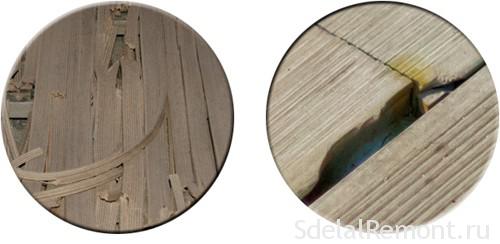
Unscrupulous sellers can identify, even without going to the store. If a telephone conversation consultant will tell you, that his proposed store decking made in Sweden or France, then such a purchase can be easily refuse. The fact, that in these countries there is no production of this material - "French" and "Swedish" decking made in China.
Scope decking
appointment, which are listed types of decking, clear of this title. Besides the use as a coating outdoor terraces, Decking may be employed in floors arrangement verandas, around swimming pools, on the roofs and balconies. Board may also be used as a covering for playgrounds, Interior patio restaurants and cafes, for garden paths, facade cladding, arrangement of quays and piers.
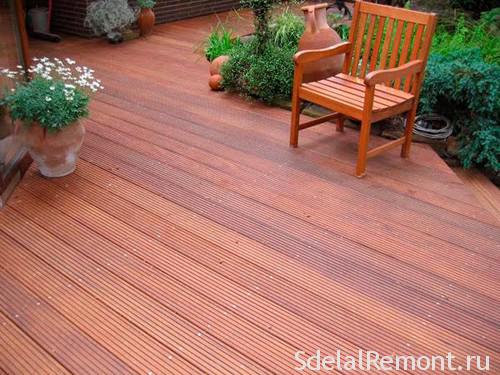
Features stacking
There are different ways of fastening decking. Usually, there are two methods of installing such coatings: indoor and outdoor. In the first case the material is attached to the joists by means of clips, applied on the inside. The second method - fixing boards to joists made from the front side. For this purpose, screws with corrosion-resistant coating.
Prepare the foundation for mounting lag
Before, how to get top jobs, make sure, that the surface, which will be installed lags, dry, smooth and clean. The best solution - a concrete pad with a slight slope and a thickness of not less than 10 cm. Before laying the lag is necessary to ensure, that water flows freely on this basis, not delayed.
Set logs
Logs are mounted in accordance with the direction of water flow, are attached to the base of the concrete with anchor bolts. Step in this case must be no more than 400 mm. In places, which involves a high load during operation, the pitch between the beams is reduced to 250 mm.
Before proceeding directly to the stacking, should be left to the decking 2-3 day on-site, where it is assumed laying for "acclimatization". The material should be adapted to the temperature and level of humidity.












